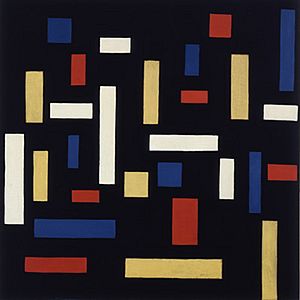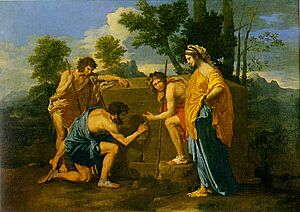Neoplasticism facts for kids
Neoplasticism (pronounced Nee-oh-PLAS-tih-sizm) is a special art idea that started in 1917. It was mostly used by Dutch artists from a group called De Stijl. In Dutch, it's known as Nieuwe Beelding, which means "new image."
The most famous artists who used Neoplasticism were Theo van Doesburg and Piet Mondriaan. This art theory wanted art to be very simple and abstract. It used only basic shapes and primary colors. This made the art look very clean and logical.
What is Neoplasticism?
The word "plastic arts" has been used for a long time. It describes visual art forms like painting, sculpture, and pottery. It's different from things like music or books. In the early 1900s, words like plasticity became popular. Art critics used them to talk about modern paintings. They especially used them for the works of Paul Cézanne.
How Artists Create Harmony
Artists like painters, sculptors, and writers try to show different parts of life. They don't do this by accident. Every piece of art is made on purpose. It is the artist's creation. What the art shows is less important than how it is made.
For example, the events in the painting by Nicolas Poussin probably never happened. The people's poses are also not common in real life. Yet, the painting looks real and feels balanced. It creates a pleasing whole. This is called harmony.
Even artists who paint very realistically, like Johannes Vermeer or Rembrandt van Rijn, used special tricks. They used these tricks to make their art as harmonious as possible. The artists of De Stijl called these "visual means."
Artists decide how much they want these visual means to stand out. They also decide how close they want to stay to their subject. In painting and sculpture, there is a mix between the artist's idea and the real world.
See also
 In Spanish: Neoplasticismo para niños
In Spanish: Neoplasticismo para niños



